Honduras manages to stall pine-munching bugs' march
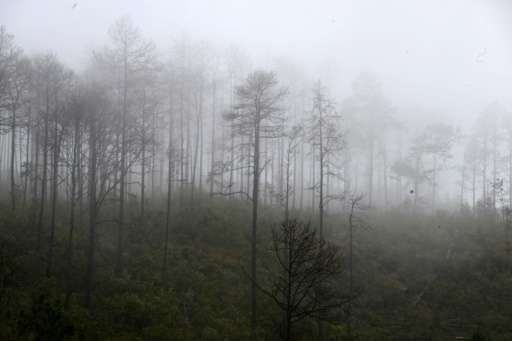
Over the past three years, Honduras has lost a quarter of its pine forests to a plague of bark-munching beetles.
Now though, after a long campaign that saw soldiers wielding chainsaws to contain the bug invasion, a little green is growing back.
In mountains north of the capital that were stripped bare, trees replanted by students from the National University's forest sciences department are growing.
The reforestation work started four months ago. The professor leading the students, Oscar Leveron, explained it will be a slow healing of the landscape: it takes 25-30 years for the trees to mature to the heights of the ones lost.
The infestation of the southern pine beetle, whose scientific name is Dendroctonus frontalis, was first detected in 2013.
Its march blighted bigger and bigger swaths of woodland until, a year ago, the exponential spread prompted President Juan Orlando Hernandez to declare a "forest emergency."
The pest has delivered what is considered one of the worst ecological disasters to befall the Central American country.
Chainsaws vs bugs
Some experts attributed the massive invasion to a prolonged drought brought on by the El Nino phenomenon felt across the region.
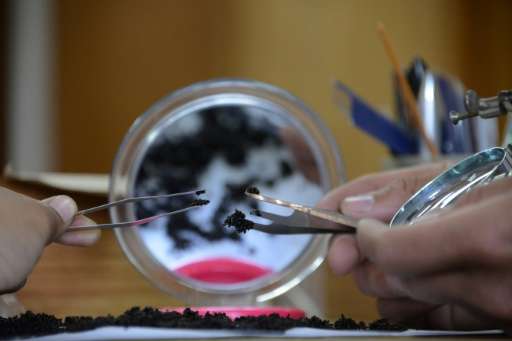
Satellite images show a total 509,000 hectares (1.2 million acres) have been destroyed by the insect since 2013.
The emergency decree allowed authorities to set up task forces of up to 3,500 people deployed in mountains across the country under the supervision of the Forestry Conservation Institute.
Wielding chainsaws, their mission was to cut down infected trees, and healthy ones in a close radius, to prevent the beetles jumping onto new hosts.
The forestry students joined soldiers in chopping down vast areas of the 5,000 hectares (1,300 acres) of pine forest owned by the university.
Traps made of rows of black funnels and pungent resin were hung from shrubs to attract and catch the bugs, which measure no more than four millimeters (0.15 of an inch).

At the worst point of the plague, they found one tree infested with 139,000 of the insects, and a trap contained up to 12,000.
As he helped students collect the bugs inside the plastic devices, Leveron said the ideal is to have "zero in the traps."
He showed one trap that contained two bees and a dozen beetles.
Leveron and authorities from the forestry institute told AFP that the plague "is being controlled." But the woods remain vulnerable to new attacks.
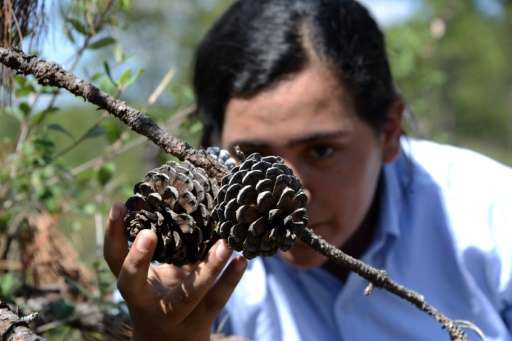
Dry season risk
The Forestry Conservation Institute official in charge of fighting back the beetle, Juan Barrios, told AFP that 883 hectares were still infected, with little pockets of up five trees teeming with the insects.
"The plague is under 98 percent control. But the problem is to prevent the dispersion of the outbreaks," he said.
The students and the forestry institute have been using seeds from pine cones to replant the devastated zones, although they believe much of the woodland will eventually regenerate naturally.
But Leveron said the rainy season that started last September helped slow the bugs' advance.
The risk now, he said, was the next dry season might see them expanding again, as the lack of water reduces the trees' production of resin, a natural defense.
-

View of the new tree plantations under the supervision of the Forest Sciences University (ESNACIFOR) after the woods had to be cut down to stop the advancing of a bark beetle infestation in Siguatepeq on January 28, 2017 -
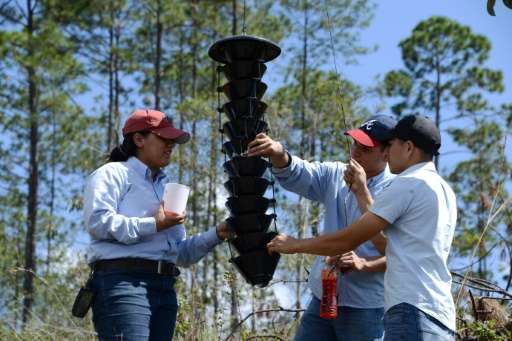
Students of the Forest Sciences University (ESNACIFOR) place bark beetle traps after the woods had to be cut down to stop its advancing in Siguatepeque on January 28, 2017 -
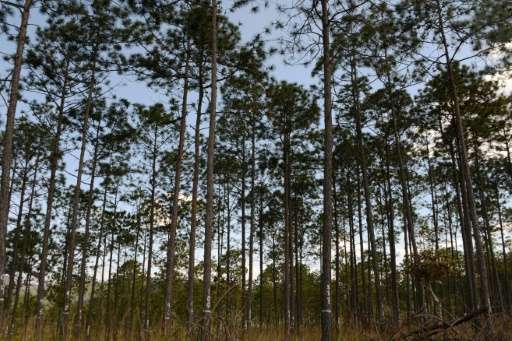
View of the new tree plantations under the supervision of the Forest Sciences University (ESNACIFOR) after the woods had to be cut down to stop the advancing of a bark beetle infestation in Siguatepeque on January 28, 2017
© 2017 AFP
















